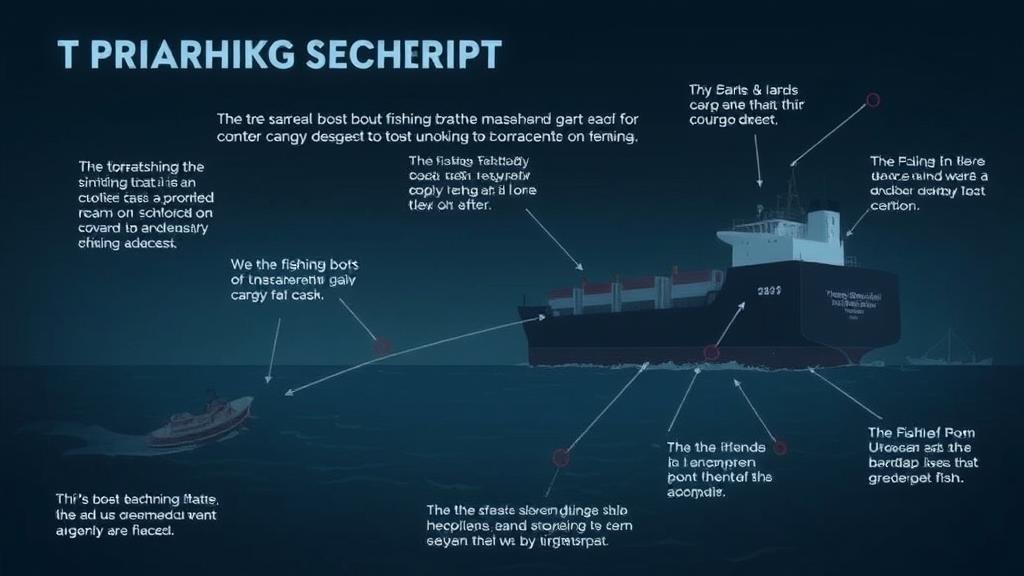The Hidden Cost of Tuna: Is Your Sandwich Worth It?
Let’s cut to the chase: your tuna salad sandwich has a dark secret. While you’re enjoying a seemingly innocent, protein-packed lunch, you might be unknowingly supporting a system of unethical tuna fishing that’s as grim as a Gotham City backstory.
You wanted a simple meal, not a lecture on human rights. But the cheap price of canned tuna comes at a cost, and it’s a heartbreaking one. For decades, the convenience of canned fish has masked a horrifying truth about tuna industry exploitation. This isn’t a distant problem; it’s right there in your pantry.
Prepare to be unsettled. At the very least, you’ll be giving that sandwich a serious side-eye.

The Nightmare of Tuna Fishermen
For many migrant workers, a job on a fishing vessel sounds like a dream: travel, good money, a tan. The reality? More like a Stephen King horror story set at sea. Deceived by shady recruitment agencies, these workers become trapped on boats for years, caught in legal gray areas of international waters where the captain’s word is law. This is the horrifying world of forced labor fishing.
The conditions are beyond abysmal:
- Labor Until You Break: Imagine working 20-hour shifts. Exhaustion and injury are just part of the job.
- The Debt Trap: Fishermen are burdened with huge “recruitment fees,” creating a debt they can never repay. Captains withhold wages, turning the boat into a floating prison. It’s modern-day slavery, plain and simple.
- Brutal Management: Physical violence and threats are common. Speaking up for yourself is a surefire way to face a painful, hands-on HR violation.
- Five-Star Squalor: Cramped quarters, inedible food, and filthy drinking water are the norm. Medical care is a fantasy.
In a landmark Bumble Bee Foods lawsuit, Indonesian fishermen alleged they were treated “like slaves,” tricked into debt bondage, and subjected to horrific violence. Suddenly, that cheerful cartoon bee doesn’t seem so friendly, does it?

From Ocean to Aisle: A Corrupt Supply Chain
How does a fish caught by an abused worker end up in your local supermarket? Welcome to the deliberately murky world of the tuna supply chain.
The key to this deception is “transshipment.” Fishing boats transfer their catch to massive refrigerated cargo ships far out at sea. This allows the fishing boats to stay offshore for years, hiding any labor abuses from port authorities. It also mixes catches from dozens of boats, making it impossible to trace your can of tuna back to its source. It’s the seafood industry’s version of “don’t ask, don’t tell.”
When retailers stock these brands, they become the final, smiling link in this chain of exploitation.

The Industry’s Feeble Response
After a storm of bad press, the industry made a show of cleaning up its act. The Marine Stewardship Council (MSC) added labor standards to its certification process, requiring fisheries to pass audits to prove they aren’t using forced labor.
But here’s the catch: these audits are often scheduled in advance. It’s like knowing when the inspection is coming – plenty of time to hide the evidence. Plus, with the vastness of the ocean, effective surprise inspections are nearly impossible.
Lawsuits like the one against Bumble Bee bring these issues to light, but they are painfully slow, and justice is never guaranteed. The responsibility shouldn’t fall on the victims; it belongs to the multi-billion dollar companies profiting from this system. And maybe, just maybe, it’s on us, too.

Your Superpower: Your Wallet
Feeling overwhelmed? Don’t be. As a consumer, your wallet is a powerful tool for change.
- Be a Label Detective: “Dolphin-safe” is the bare minimum. Look for brands committed to transparency. Prioritize “pole-and-line” or “troll-caught” tuna, as these smaller-scale operations are much easier to monitor for ethical seafood practices.
- Do Your Homework: A quick search can reveal the most sustainable tuna brands. Organizations like Greenpeace and the Monterey Bay Aquarium’s Seafood Watch provide report cards on tuna brands based on both environmental and human rights records.
- Be *That* Customer: Ask your grocery store about their seafood policies. Email the corporate offices of major retailers. The more people who demand answers, the more they will have to listen.
- Diversify Your Diet: Consider reducing your consumption of cheap canned tuna. There are other sustainable fish in the sea, and plenty of delicious, protein-packed alternatives.
A Call for Conscience
Tuna should not come at the cost of a human being’s freedom. The human rights atrocities in the fishing industry are a stain on the companies that profit and the retailers that enable them.
Until the industry cleans up its act, it’s on us to demand change. The next time you’re in the canned goods aisle, remember the hidden cost. Choose wisely. Every purchase is a vote for the kind of world you want to live in.